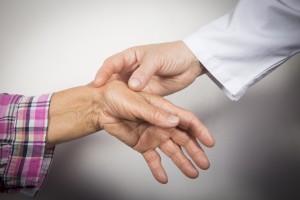A test for bone density is a non-invasive, painless way to measure your bone health and determine your risk for osteoporosis. This test can also measure how well you are responding to osteoporosis treatment and assess your risk for fracture. It is similar to an x-ray, and the results are compared to two standard norms to determine your score.
What Is a Bone Density Test?
A bone mineral density test (BMD), a non-invasive and painless test, is the best way to determine your bone health. Dual energy x-ray absorptiometry (DEXA) is the best current test to measure BMD. The test is quick and painless; it is similar to having an x-ray taken, but uses much less radiation.
This test can identify osteoporosis, determine your risk for fractures, and monitor your response to an osteoporosis treatment. Different tests for bone density may measure your:
- Hip
- Spine
- Wrist
- Finger
- Shin bone
- Heel.
How Does This Test for Bone Density Work?
To measure bone mass, the person lies on a flat padded table and remains motionless while the "arm" of the instrument passes over the whole body or over selected areas. While the measurement is performed, a beam of low-dose x-rays from below the table passes through the area being measured. These x-rays are detected by a device in the instrument's arm. The bone densitometry machine converts the information received by the detector into an image of the skeleton and analyzes the quantity of bone the skeleton contains. The results are usually reported as BMD, or "bone mineral density," the amount of bone per unit of skeletal area.
For the spine measurement, the person's lower legs rest on a Styrofoam cube with the hips flexed. For the hip measurement, the toes are placed in a "pigeon-toed" position to rotate the hips and provide the largest projected area to measure. For the arm measurement, the person sits on a chair beside the machine and places an arm into a holding device while the measurement is taken. For a total body measurement, which provides individual measurements of the legs, trunk, pelvis, ribs, arms, and skull, the person simply lies flat and motionless.
It is important to remember this warning: If you move while the measurement is taking place, errors can occur. Usually it is not too difficult for the person to remain motionless because, using the latest equipment, each measurement requires less than a minute to perform.


 Chronic pain in rheumatoid arthritis explained, pain threshold can be raised by altering brain chemistry
Chronic pain in rheumatoid arthritis explained, pain threshold can be raised by altering brain chemistry